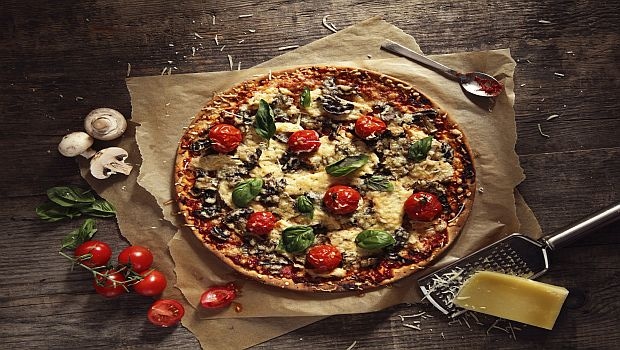Kids love pizza (Actually, who doesn’t love pizza?). And according to a new study published in Pediatrics, pizza consumption is a top contributor to children’s and adolescents’ caloric intake. So researchers examined children’s and adolescents’ pizza consumption patterns and their impact on their energy and nutrient intake
January 26, 2015

Kids love pizza (Actually, who doesn’t love pizza?). And according to a new study published in Pediatrics, pizza consumption is a top contributor to children’s and adolescents’ caloric intake. So researchers examined children’s and adolescents’ pizza consumption patterns and their impact on their energy and nutrient intake (Jan. 19, 2015).
From 2003 to 2004 to 2009 to 2010, overall energy intake from pizza declined 25 percent among children. Among adolescents, although caloric intake from pizza among those who consumed pizza fell, overall pizza intake remained unchanged due to slightly higher pizza consumption prevalence.
For children and adolescents, pizza intake fell at dinner time and from fast food. For children and adolescents, respectively, pizza consumption was significantly associated with higher net daily total energy intake (84 kcal and 230 kcal) and higher intakes of saturated fat (3 g and 5 g) and sodium (134 mg and 484 mg) but not sugar intake, and such affects generally did not differ by sociodemographic characteristics. Pizza consumption as a snack or from fast-food restaurants had the greatest adverse impact on total energy intake.
Based on the adverse dietary effects of pizza consumption found in this study, the researchers said pizza consumption should be curbed and its nutrient content improved.
The study methods are below. But what I am unsure about is what types of pizza these kids and teens are eating? Because, when you think about it, pizza can be a good source of nutrition: The crust can provide fiber and whole-grains; the sauce is made from tomatoes, which are chock full of lycopene and vitamin C; cheese is a source of calcium and protein; and a pie topped with vegetables and meats provides even more nutrients. So I’m curious, what type of pizza are these kids eating?
Study Methods: Twenty-four–hour dietary recall data for children aged 2 to 11 and adolescents aged 12 to 19 were drawn from the 2003 to 2004, 2005 to 2006, 2007 to 2008 and 2009 to 2010 National Health and Nutrition Examination Survey. Researchers tested changes in consumption patterns, including by race/ethnicity, income, meal occasion and source. Individual-level fixed effects regression models estimated the impact of pizza consumption on total energy intake and intakes of sugar, saturated fat and sodium.
You May Also Like




.png?width=800&auto=webp&quality=80&disable=upscale)